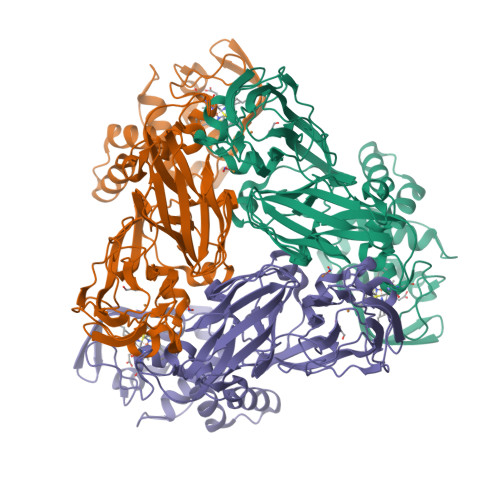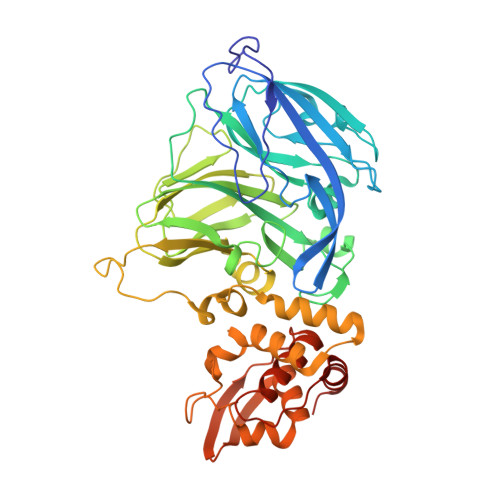Unexpected Roles of a Tether Harboring a Tyrosine Gatekeeper Residue in Modular Nitrite Reductase Catalysis.
Hedison, T.M., Shenoy, R.T., Iorgu, A.I., Heyes, D.J., Fisher, K., Wright, G.S.A., Hay, S., Eady, R.R., Antonyuk, S.V., Hasnain, S.S., Scrutton, N.S.(2019) ACS Catal 9: 6087-6099
- PubMed: 32051772
- DOI: https://doi.org/10.1021/acscatal.9b01266
- Primary Citation of Related Structures:
6QPT, 6QPU, 6QPV, 6QPX, 6QPZ, 6QQ0, 6QQ1, 6QQ2 - PubMed Abstract:
It is generally assumed that tethering enhances rates of electron harvesting and delivery to active sites in multidomain enzymes by proximity and sampling mechanisms. Here, we explore this idea in a tethered 3-domain, trimeric copper-containing nitrite reductase. By reverse engineering, we find that tethering does not enhance the rate of electron delivery from its pendant cytochrome c to the catalytic copper-containing core. Using a linker that harbors a gatekeeper tyrosine in a nitrite access channel, the tethered haem domain enables catalysis by other mechanisms. Tethering communicates the redox state of the haem to the distant T2Cu center that helps initiate substrate binding for catalysis. It also tunes copper reduction potentials, suppresses reductive enzyme inactivation, enhances enzyme affinity for substrate, and promotes intercopper electron transfer. Tethering has multiple unanticipated beneficial roles, the combination of which fine-tunes function beyond simplistic mechanisms expected from proximity and restrictive sampling models.
Organizational Affiliation:
Manchester Institute of Biotechnology and School of Chemistry, Faculty of Science and Engineering, The University of Manchester, 131 Princess Street, Manchester M1 7DN, United Kingdom.






















